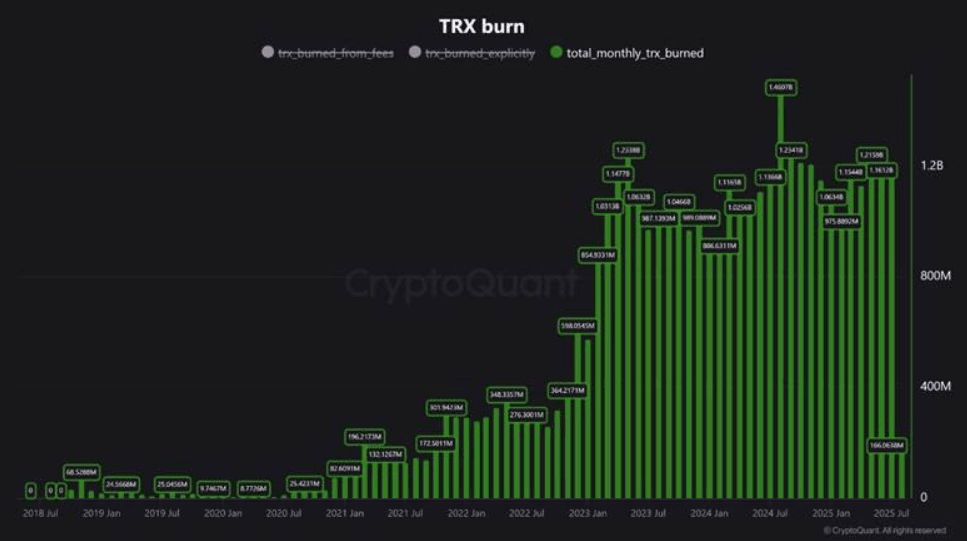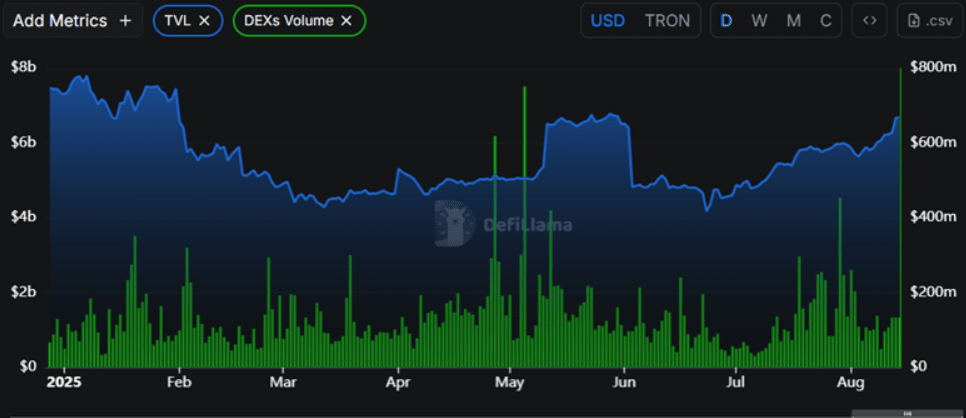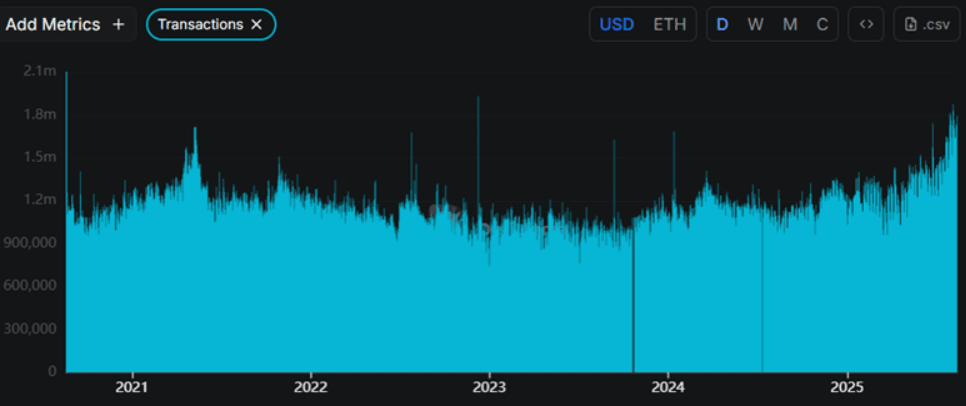Tron (TRX) has firmly remained among the leading coins for the past 6 months. However, the question arises: will this coin continue to maintain its impressive performance, especially as the 'altcoin season' is gradually starting?
This week, Ethereum (ETH) has taken the entire 'spotlight' in the market, but TRX has also shown that it is not lagging behind. For example, long-term investors holding TRX for exactly one year ago are currently recording an increase of about 41%, just slightly lower than the 42% of ETH in the same period.
The TRX bulls also prove their strength in the short term as they aim for 8 consecutive weeks of increases, with about 37% of the annual profit concentrated in this period. Notably, the upward momentum has been maintained since TRX entered the overbought zone in mid-July, clearly reflecting the increasingly prominent position of this coin in the altcoin ecosystem.

In terms of 'dominance', TRX has maintained a sideways trend from April to now, indicating that demand from the altcoin season is not yet the main driving force. This implies that institutional cash flow plays a major driving role. And if this scenario continues, the TRX bulls could continue to dominate when the altcoin season truly explodes, especially in the context of retail capital beginning to flow strongly into the market.
Tron's deflationary model can support TRX prices in the long term
Token supply is always a key factor determining value, and with TRX, the advantage lies in its prominent deflationary characteristics. This is also the reason this coin is increasingly favored by long-term investors.
According to data from CoinMarketCap, Tron currently has about 94.68 billion TRX in circulation. Notably, this network possesses one of the strongest deflationary models in the cryptocurrency market, as nearly half of the total supply has been permanently burned.

This mechanism causes the supply of TRX to continuously shrink, increasing scarcity over time. Notably, the deflationary process of TRX is not an automatic mechanism but is tied to the actual demand of the network: the more transactions and applications, the greater the amount of tokens burned. On average, Tron has eliminated more than 1 billion TRX each month in most months of the year 2025.
The correlation between network activity and the TRX burn rate has opened up the need for deeper analysis of Tron's operational performance.
Tron adds more than 2 billion USD to TVL
Key indicators show that the TVL (total value locked) of Tron has surged from 4.36 billion USD (June 24) to 6.67 billion USD according to the latest data, equivalent to an increase of about 2.31 billion USD. This is a strong signal that investors remain committed to a long-term holding strategy.

Tron's DeFi ecosystem maintains stability, but the activity level still cannot compare to major competitors like Ethereum. For example, on August 13, the trading volume on Tron's DEX platforms reached about 132 million USD, while Ethereum surpassed the threshold of 9 billion USD.
However, TRX has cleverly offset this limitation with a breakthrough in the stablecoin sector. The number of active addresses on the network reached nearly 588,000, clearly reflecting the heat of the ecosystem.
In particular, on-chain transaction data has been continuously rising sharply over the past 4 months, indicating that Tron is attracting an increasing demand for network usage – a factor that could pull demand for TRX.

This superior advantage mainly comes from the impressive adoption of stablecoins, thus pushing TRX up to the group of digital assets favored by investors today.